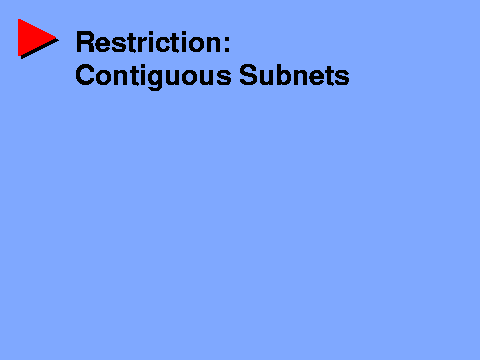

Yet what if the router isn't part of the classful network? In this case, it has no way of knowing the prefix length, since it isn't configured with the subnet mask, nor is the information provided by the older routing protocols. Therefore, a router can not process subnet routes for networks to which it is not directly connected. This leads to a simple rule:
Did you follow my logic?
In the example, Routers A and B in the Class B network 152.50.0.0 can not advertise 152.50's subnets to Router C, not part of the 152.50.0.0 network. The other router would have no way of splitting the routes into subnet and host fields. Therefore, the only route that can be advertised is for the entire 152.50.0.0 network. Router C, receiving two routes, both for 152.50.0.0, has no way of selecting between them, and will therefore send at least some of the traffic for this network to the wrong router.
The trouble is that the two parts of 152.50 are discontiguous - separated by another classful network in the middle. We could fix the problem by adding a link between Routers A and B. Now the network is contiguous - any two devices in 152.50 can communicate using only 152.50's links. Now, no matter where Router C sends its traffic, the 152.50 routers can deliver it.